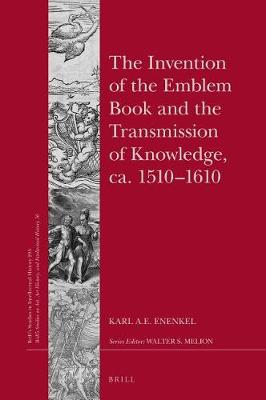Brill's Studies in Intellectual History / Brill's Studies on Art, Art History, and Intellectual History
2 total works
295-36
The Invention of the Emblem Book and the Transmission of Knowledge, Ca. 1510-1610
by Karl A E Enenkel
Published 13 December 2018
This study reexamines the invention of the emblem book and discusses the novel textual and pictorial means that applied to the task of transmitting knowledge. It offers a fresh analysis of Alciato's Emblematum liber, focusing on his poetics of the emblem, and on how he actually construed emblems. It demonstrates that the "father of emblematics" had vernacular forebears, most importantly Johann von Schwarzenberg who composed two illustrated emblem books between 1510 and 1520.
The study sheds light on the early development of the Latin emblem book 1531-1610, with special emphasis on the invention of the emblematic commentary, on natural history, and on advanced methods of conveying emblematic knowledge, from Junius to Vaenius.
The study sheds light on the early development of the Latin emblem book 1531-1610, with special emphasis on the invention of the emblematic commentary, on natural history, and on advanced methods of conveying emblematic knowledge, from Junius to Vaenius.
307/41
Ambitious Antiquities, Famous Forebears
by Karl A E Enenkel and Konrad Adriaan Ottenheym
Published 16 September 2019
This monograph studies the constructions of 'impressive' historical descent manufactured to create 'national', regional, or local antiquities in early modern Europe (1500-1700), especially the Netherlands. This was a period characterised by important political changes and therefore by an increased need for legitimation; a need which was met using historical claims. Literature, scholarship, art and architecture were pivotal media that were used to furnish evidence of the impressively old lineage of states, regions or families. These claims related not only to Classical antiquity (in the generally-known sense) but also to other periods that were regarded as periods of antiquity, such as the chivalric age. The authors of this volume analyse these intriguing early modern constructions of appropriate "antiquities" and investigate the ways in which they were applied in political, intellectual and artistic contexts in Europe, especially in the Northern Low Countries.
This book is a revised and augmented translation of Oudheid als ambitie: De zoektocht naar een passend verleden, 1400-1700 (Nijmegen: Vantilt, 2017).
This book is a revised and augmented translation of Oudheid als ambitie: De zoektocht naar een passend verleden, 1400-1700 (Nijmegen: Vantilt, 2017).

